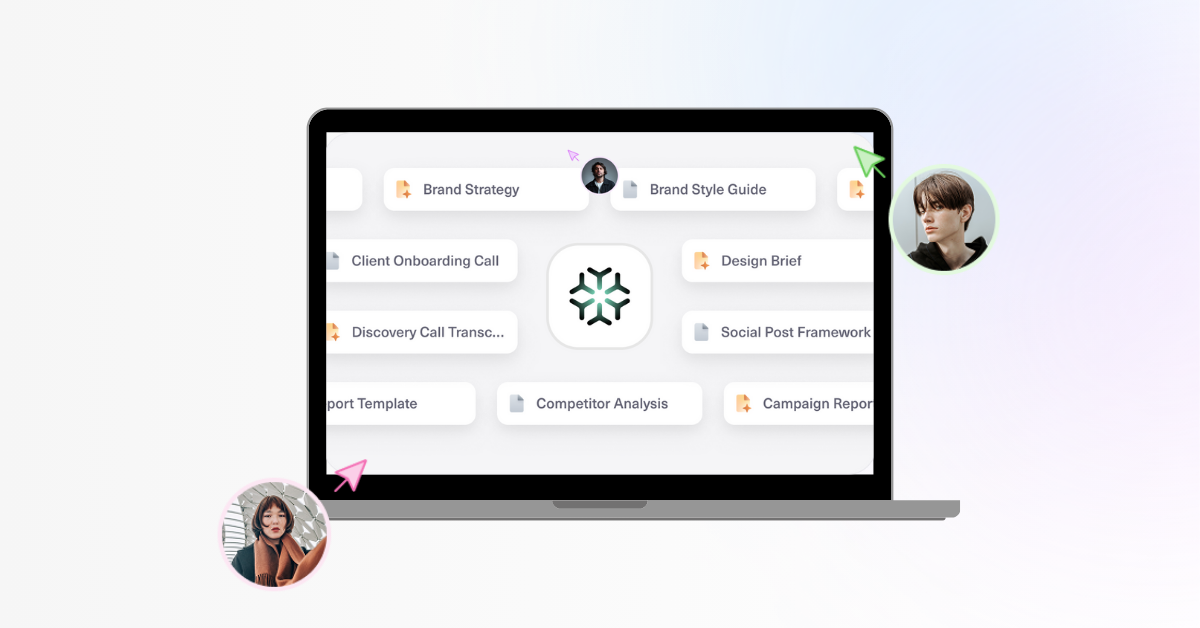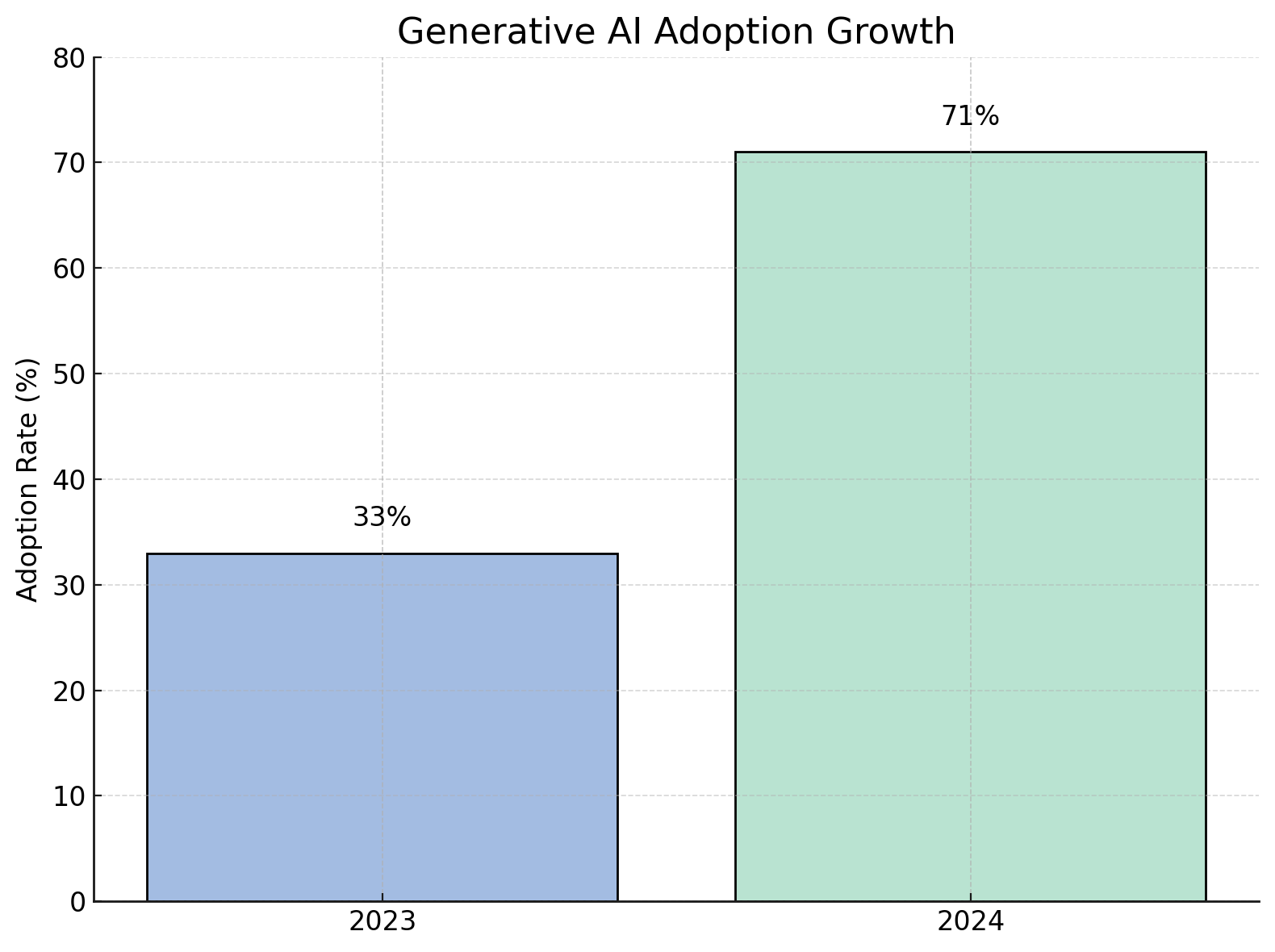The most significant competitive advantage for marketing agencies in 2025 isn’t just adopting AI—it’s rigorously measuring real-world ROI and building an AI stack that fits your agency’s unique needs. With AI tools for marketing agency operations now essential, the next frontier is understanding which tools actually drive client results, operational efficiency, and sustainable growth.
Why is this shift happening?
Because AI is no longer a “nice-to-have.” It’s central to how modern agencies operate, with 88% of marketers using AI tools daily (Donovan, 2025). Yet, as AI adoption becomes universal, the true differentiator isn’t who adopts AI—it’s who leverages it for measurable, strategic advantage.
Table of Contents
- The AI Tipping Point: Why Now?
- What ROI Really Means in the Age of AI
- The “Why” Behind Measuring AI ROI
- Case Study: How 500 Designs Achieved 40% Revenue Growth with Aurora
- Enterprise vs. Small Agency: Right Stack, Right Results
- Framework: How to Measure and Communicate AI ROI
- How to Optimize Content for AI Search Results
- FAQs
- Conclusion: Future-Proofing Your Agency
- References
The AI Tipping Point: Why Now?
Recent research shows:
- 88% of marketers use AI tools daily (Donovan, 2025)
- 83% of companies now rank AI among their top business priorities (Exploding Topics, 2025)
- Generative AI adoption exploded from 33% in 2023 to 71% in 2024 (McKinsey, 2025)
Why it matters:
AI is now embedded in every agency workflow—from campaign ideation, to client reporting, to optimization and measurement. The new question is not “should we use AI tools for marketing agency tasks?” It’s “how do we measure which AI tools move the needle for our clients, our team, and our bottom line?”
What ROI Really Means in the Age of AI
Traditional marketing ROI measured things like campaign results, cost-per-acquisition, and time to market. But AI fundamentally changes the equation. With AI, ROI is measured not only in dollars or hours saved, but in:
- Time Saved: Automation frees up team hours previously lost to manual reporting, repetitive analysis, or content production.
- Accuracy & Insight: Predictive analytics and machine learning unlock deeper, more reliable insights—leading to smarter strategic decisions.
- Scalability: AI enables agencies to grow their client base or campaign volume without a 1:1 increase in staff or resources.
- Quality & Consistency: AI-driven tools ensure brand voice, compliance, and messaging are upheld across every campaign, every time.
Why go deeper on ROI?
Because as clients become more sophisticated, they expect agencies to prove—not just promise—the value of their tech stack. Agencies that measure and communicate AI ROI don’t just retain clients; they win bigger contracts and attract more ambitious brands.
The Why Behind Measuring ROI of AI Tools for Marketing Agency Teams
1. Accountability in a Data-Saturated World
AI enables agencies to do more, faster. But with this power comes a greater need for transparency. Leadership and clients want to know:
- Which tools are essential, and which are “shiny objects”?
- Are we seeing measurable improvement in campaign outcomes, not just activity?
Why:
Measuring ROI ensures you’re investing in tools that make a real difference—and cutting those that don’t.
2. Competitive Differentiation
With AI tools for marketing agencies becoming ubiquitous, demonstrating ROI helps your agency stand out.
- Can you quantify how much faster you deliver?
- Can you show clients how AI improves targeting or lowers cost per lead?
Why:
Proof beats hype. In a crowded agency market, those who document and share real ROI win trust and new business.
3. Continuous Improvement
AI evolves rapidly. Measuring ROI helps agencies:
- Identify what’s working (and double down)
- Spot gaps or redundancies in their AI stack
- Justify new investments to stakeholders
Why:
ROI measurement isn’t a one-off report—it’s a feedback loop for smarter, more agile agency operations.
Case Study: How 500 Designs Achieved 40% Revenue Growth with Aurora
Real-world impact is where AI proves its value—and few examples are more compelling than 500 Designs. This case study highlights how strategic AI tools for marketing agency use can go beyond automation to drive measurable business growth. By integrating Aurora’s AI-powered systems, the agency didn’t just streamline workflows—they doubled project capacity and achieved a 40% revenue increase without expanding their team.
Challenge:
Fragmented workflows, manual tasks, and siloed knowledge limited growth and efficiency.
Solution:
The agency deployed Aurora, an AI-powered system for workflow automation and knowledge management.
Results:
- 40% year-over-year revenue growth
- 2x their project capacity, with zero additional headcount
- Streamlined operations and creative output, without a major headcount increase
- Institutional knowledge became accessible to all, not just a handful of “process keepers”
| Agency Challenge | AI Solution: Aurora Feature | Impact/ROI |
|---|---|---|
| Disconnected workflows | Centralized Knowledge Docs & assets | 40% YoY growth |
| Manual, repetitive tasks | Automated with SmartFlows | Freed up creative capacity |
| Information silos | Knowledge sharing across workspaces | Faster onboarding, fewer errors |
Why does this matter?
Because it shows that modern ROI isn’t just about cost-cutting, it’s about unlocking new value and growth with the right AI tools for marketing agency teams.
Enterprise vs. Small Agency: Right Stack, Right Results
Enterprises: Scale, Standardization, and Data Integration
No two agencies are the same—and that’s exactly why flexibility is crucial when it comes to AI tools for marketing agency use. Whether you’re leading a large enterprise with complex, multi-channel operations or running a lean, fast-moving small agency, the right AI stack should align with your unique goals and structure. This section breaks down how different agency types can tailor their AI adoption for maximum ROI, showing that success isn’t about size—it’s about smart strategy and the right tools.
- Needs:
- Robust cross-channel analytics
- Secure, collaborative knowledge bases
- Scalable workflows across large teams
- AI Tool Must-Haves:
- Integrations (CRM, analytics, project management)
- Knowledge Docs for institutional memory
- SmartFlows for process automation
- ROI Focus:
- Scalability without sacrificing consistency
- Data-driven decision-making at every level
Small Agencies: Agility, Simplicity, and Cost Efficiency
- Needs:
- Rapid setup
- Easy-to-use tools
- Immediate, visible ROI
- AI Tool Must-Haves:
- Out-of-the-box automation
- All-in-one dashboards
- Affordable pricing
- ROI Focus:
- Faster client delivery, fewer errors
- Ability to compete with larger agencies on output (not just price)
| Enterprise Needs | Small Agency Needs | |
|---|---|---|
| Stack | Integrations, Knowledge, | Simplicity, Automation, |
| SmartFlows, Security | Fast Setup, Affordability | |
| ROI | Scale & Consistency | Agility & Value |
Why this distinction matters:
AI tools for marketing agency use that provide flexible, modular features allow both large and small agencies to realize ROI on their terms. One-size-fits-all rarely works in the AI era.
Framework: How to Measure and Communicate AI ROI
Implementing AI is just the beginning—real success comes from knowing how to measure its value. For every agency investing in AI tools for marketing agency operations, having a clear ROI framework is essential. It’s not enough to automate or analyze—you need to prove performance across time, output, and client satisfaction. This section lays out the key metrics and communication strategies agencies can use to quantify AI impact and turn internal wins into client-facing proof.
1. Time Saved
- Why it matters:
Time is the only non-renewable resource for agencies. AI that automates routine work directly increases capacity for creative and strategic output.
2. Campaign Performance
- Why it matters:
If AI-driven insights don’t translate into better CTR, lower CPC, or higher conversions, the tool may not be worth it.
3. Client Satisfaction & Retention
- Why it matters:
AI tools should improve client experience—faster reporting, more tailored recommendations, fewer errors—all of which drive loyalty and referrals.
4. Team Productivity & Morale
- Why it matters:
Agencies that use AI to eliminate busywork keep teams happier and more engaged, reducing turnover and onboarding costs.
How to Communicate ROI:
- Share before/after stats in client reports
- Use case studies and testimonials (with permission)
- Implement dashboards that visualize efficiency and outcome improvements
Agencies that focus on these metrics often see not just efficiency gains, but real growth in client retention and reputation (Digital Marketing Institute, 2025).
FAQs
Q: What are the best AI tools for marketing agency use in 2025?
A: The best AI tools for marketing agency teams in 2025 deliver measurable ROI, automation, and client-facing value. Leading platforms include Aurora (for AI-driven workflow automation and knowledge management), Jasper (for AI copywriting and content creation), HubSpot (for AI marketing automation and CRM), SEMrush (for SEO optimization), and SurferSEO (for real-time content scoring). These AI tools for marketing agency growth help streamline operations, improve targeting, reduce errors, and increase campaign performance.
Q: Why should agencies measure the ROI of AI tools?
A: To ensure technology spend actually drives client results, team efficiency, and competitive differentiation.
Q: How can agencies optimize their sites for AI search results?
A: Use clear headings, structured data, up-to-date content, and answer common client questions directly.
What About the Creative Side of AI and Agencies?
While much of the ROI conversation centers on efficiency and performance, AI tools for marketing agency use are also reshaping the creative process. From generating visuals to streamlining content ideation, these tools help agencies scale while pushing creative boundaries. Curious how this looks in action? Explore how AI for creative agencies is transforming content creation and design. The key takeaway: in 2025, AI tools for marketing agency success are non-negotiable—for creative teams and C-level leadership alike. As competitors double down on innovation, agencies that experiment and adapt will lead the next wave of standout campaigns.
Conclusion: Future-Proofing Your Agency
For agency leaders, the AI question is no longer “Should we use AI tools for marketing agency growth?” It’s “How do we maximize value and prove it?”
The agencies that succeed in 2025 will be those that not only adopt AI, but measure, communicate, and continually optimize its ROI.
The path forward is clear:
- Choose flexible, scalable AI tools (like Aurora) that fit your agency’s needs
- Measure what matters—time, performance, satisfaction, productivity
- Optimize your content and mindset for the new world of AI-powered search
- Future-ready agencies will use AI tools for marketing agency growth with measurable ROI as the compass.
Whether you’re a boutique firm or a global agency, understanding the “why” behind AI ROI is the key to sustainable, differentiated growth.
References
- Donovan, T. (2025). “2025 AI Marketing Agencies Surveys Driving Results.” LinkedIn.
- Exploding Topics. “AI Statistics in Business.”
- McKinsey & Company. “The State of AI.”
- AdvanceCE Arizona. “Leveraging AI for Digital Marketing Success.”
- Digital Marketing Institute. “10 Eye-Opening AI Marketing Stats in 2025.”
- How to Optimize Your Website and Content to Rank in AI Search Results
Want to try Aurora for your agency? Sign up for free here.

